- Home
- Deborah Harkness
The World of All Souls Page 49
The World of All Souls Read online
Page 49
The value of The Etymologies lies not in their originality but in their preservation of the knowledge of earlier centuries. On the other hand, translator Katherine Nell MacFarlane notes that Etymologiae might have contributed to the loss of these earlier works precisely because Isidore was supposed to have extracted from them everything worth knowing.
“I have therefore written of the symbolic philosophy of the art of Kabalah so as to make Pythagorean doctrine better known to scholars. I take no sides in all this. I tell my story as an outsider.”*
—Johannes Reuchlin
Title: De arcanis catholicae veritatis (Concerning Secrets of the Universal Truth)
Author: Pietro Colonna Galatino (1460–1540)
Background: Peter Knox’s informants, scattered all around Europe, kept him up to date on any important discoveries that would provide clues to the Book of Life. Pavel Skovajsa at the Strahov Monastery in Prague finally found a significant letter for Knox hidden in the endpapers of an old book. The book was a copy of the De arcanis catholicae veritatis. The letter from Rabbi Loew revealed to Knox that Edward Kelley had removed three pages from the Book of Life before it was stolen. It is ironic that Loew’s letter should be hidden in a book notorious in the Renaissance struggle between factions of the Catholic Church and the Jews.
Pietro Colonna Galatino was an Italian theologian who was charged by the pope and Holy Roman emperor to write the De arcanis catholicae veritatis in 1516. Johannes Reuchlin’s work, De arte cabbalistica, was also included within the copy of Galatino’s book that Pavel Skovajsa discovered. Reuchlin, a contemporary of Galatino, was a German scholar and an expert in Hebrew and Greek. He became locked in an intellectual struggle with other theologians who believed that Jewish literature hindered the Jews’ conversion to Christianity and that their books should be burned. Galatino defended Reuchlin’s claim that Jewish sources were valuable for Christian scholars and should not be destroyed. He took it even further in this work by twisting interpretations of the Jewish texts to claim they proved the truth of Christian doctrines.
Reuchlin’s enemies managed to have him called before the Inquisition and a papal court, but the trial was eventually suppressed. And the church soon had a far bigger crisis to contend with: When in 1517 Reuchlin saw the theses put forward by Martin Luther, he exclaimed, “Thanks be to God, at last they have found a man who will give them so much to do that they will be compelled to let my old age end in peace.”
“A great many things keep happening, some of them good, some of them bad. The inhabitants of different countries keep quarreling fiercely with each other and kings go on losing their temper in the most furious way.”*
Title: Historia francorum (The History of the Franks)
Author: Gregory of Tours (c. 538–94)
Background: The sixth-century French historian and bishop Gregory of Tours was born in the Auvergne’s Clermont-Ferrand. His work The History of the Franks is one of the most famous sources of that period, and Philippe de Clermont approved of Diana’s reading it.
Gregory lamented that none of his contemporaries were recording events, so he ambitiously decided to begin at “the foundation of the world.” He started with Adam and Eve and worked his way through the years, recounting the significant people and events that had shaped the lands around him, up to and including the period in which he lived. The book, made up of ten volumes, covers Europe at a time when the breakup of the Roman Empire had caused huge shifts. The Frankish kings and queens, including the famous Merovingian dynasty, had stepped into the power vacuum. Gregory records the brutal battles, power plays, and interfamily murders, as well as his own chronicle of events as bishop of Tours, including natural events and ominous portents in the Auvergne at the time. Gregory himself came from a privileged family, in the main connected to the church, with a particular monopoly on the bishopric of Tours. This was especially through his mother, Armentaria, whom Philippe believed to be a far superior linguist to her son. Philippe also revealed to Diana that Matthew had known Gregory when he was a boy and had studied with him in Tours.
“How much lesse shall I thy handmaide, being by kinde a weake woman, have sufficient abilitie to rule these thy kingdomes of England and Ireland, an innumerable and warlike nation.”*
Title: Queen Elizabeth’s Prayer Book or “Protestant Book of Hours”
Printer/Producer: John Day (c. 1522–84)
Background: To help her keep up appearances as a married woman in the sixteenth century, Matthew gave Diana a copy of what was known as “Queen Elizabeth’s Prayer Book.” This was first printed in 1569 and was reissued many times during the queen’s long reign. It is often referred to as the “Protestant Book of Hours” due to its beautifully lavish and hand-colored illustrations and was a collection of “Christian Prayers and Meditations in English.” It was printed in London by John Day, a Protestant printer based in Aldersgate (not far from where Diana and Matthew lived in Blackfriars). The woodcut portrait of Elizabeth kneeling in prayer that Diana saw tied it clearly to her as the reigning monarch of the day. And a copy held by the Lambeth Palace Library in England includes special prayers referring to Elizabeth in the first person, indicating it was presented to her as her personal copy.
“There are two sorts of Magic. The one is infamous, and unhappy, because it has to do with foul Spirits, and consists of incantations and wicked curiosity, and this is called Sorcery, an art which all learned and good men detest. Neither is it able to yield an truth of reason or nature, but stands merely upon fancies and imaginations, such as vanish presently away, and leave nothing behind them. . . . The other Magic is natural, which all excellent wise men do admit and embrace, and worship with great applause.”*
Title: Magia naturalis (Natural Magic)
Author: Giambattista della Porta (1535–1615)
Background: Renaissance scholar Giambattista della Porta was an Italian, born in Naples to a rich and influential family, who from childhood had been surrounded by scholars. As with most intellectuals of the Renaissance, della Porta’s interests were very wide-ranging, and he was known for his plays as well as for studies on astrology, alchemy, and natural philosophy. His Magia naturalis was first published in 1558, with updated versions released later in his life. Translations (including English) all over Europe marked its popularity at the time. In the Magia naturalis, della Porta laid out his broad studies and theories of the natural world and how they could be utilized and manipulated by men. Topics range from magnetism, medicine, and recipes to the camera obscura. His observation on lenses—that with “a concave you will see small things afar off very clearly; with convex, things nearer appear bigger, but more obscurely; if you know how to fit them together, you will see things afar off, and things near at hand, both greater and clearly”—was what, in Shadow of Night, ignited Thomas Harriot’s interest, contributing to his invention of the refracting telescope.
“Whether the Belief that there are such Beings as Witches is so Essential a Part of the Catholic Faith that Obstinacy to maintain the Opposite Opinion manifestly savours of Heresy.”*
Title: Malleus Maleficarum (The Hammer of Witches)
Author: Jacob Sprenger (c. 1436–95) and Heinrich Kramer (c. 1430–1505)
Background: The Hammer of Witches, published in 1486, was the book that Mr. Danforth carried in sixteenth-century Woodstock to back up his accusations against Diana Bishop. It became the manual in the medieval period for the persecution of witches. Written originally in Latin by Jacob Sprenger and Heinrich Kramer, it is made up of three parts. Similar to Hopkins’s later Discovery of Witches, the book is laid out as a dialogue, preempting the reader’s queries. The first volume attacks those who dispute the existence of witches and explains why it is largely women who convene with the Devil. The second part examines the three main maleficia of witches and how they might be combated or cured. It tells of witches’ tricks and black arts, including a whole chapter ded
icated to “How, as it were, they Deprive Man of his Virile Member.” The third part then looks at the legal processes of prosecuting a witch and how a defendant should be tortured in different ways that relate to her crime until she confesses. As Diana noted, it struck terror into the hearts of all witches for centuries.
“Omnia nodis arcanis connexa quiescunt”
“All things are at rest, connected by secret knots.”*
Title: Magnes sive de Arte Magnetica
Author: Athanasius Kircher (c. 1601/2–80)
Background: In Diana’s search for the Book of Life’s missing pages, it’s not surprising her investigations led her to the seventeenth-century scholar Athanasius Kircher. Kircher, who was born in Germany, educated as a Jesuit, and later moved to Rome, was a renowned international figure of scholarship in his lifetime. Writing, experimenting, and collecting curiosities on a huge range of topics in his search for universal knowledge, he was a polymath who carried on the spirit of the learned Renaissance man. His museum of rare and ancient objects was a must-see on early European grand tours. He became particularly famous for his work on Egyptian hieroglyphics, although his findings were later disproved as meaningless guesswork. It was his fame for deciphering that led scholars to seek his aid with the mysterious Voynich manuscript.
The frontispiece for his Magnes sive de Arte Magnetica was what convinced Diana that Kircher had seen the Tree of Life illumination from the Book of Life’s missing page. This book on magnetism was another example of Kircher’s broad range of interests, encompassing magnetism in the widest possible sense, from gravity to love.
“Through bitter sweetness and delightful pain, I fall to the center and am drawn up toward the sky; necessity constrains me while the good leads me on; fate draws me to the abyss, while counsel uplifts me; desire urges me on, while fear bridles me; care burns me and keeps me long in peril.”*
Title: The Heroic Frenzies
Author: Giordano Bruno (1548–1600)
Background: Giordano Bruno, born Filippo Bruno, was connected with the scholars to whom Diana was introduced in sixteenth-century England, not to mention Matthew himself. Matthew revealed to Diana that Bruno had been a daemon who crossed the madness-genius divide more often than most. The Heroic Frenzies, dedicated to Mary Sidney’s brother, Philip Sidney, was one of many works Bruno published in the 1580s while he was in England. The book is structured in the form of a dialogue, with sonnets woven throughout, and describes the ascent of the soul through the myriad challenges and rewards of love, ultimately attaining the ideal. His observations and language struck a chord with Diana when she thought about her own magical powers, as well as her relationship with Matthew.
Giordano Bruno was an Italian priest, born in Nola in the Kingdom of Naples (referring to himself as the Nolan) and known as a philosopher, mathematician, poet, and astrologer. He became most famous for his views on cosmology, endorsing Copernicus’s revolutionary theory that the sun, not the earth, was the fixed center of the universe, with the earth and planets rotating around it. Bruno took this further by suggesting the universe was infinite and that there were other distant suns that could also support life. Bruno’s strong opinions fostered many critics and enemies, and he was finally tried by the Inquisition for heresy and burned at the stake in Rome in 1600. Many have since celebrated him as a martyr for science.
“The witch Roger Bacon owned it and valued it for a great treasure. His name is on the title page, along with the inscription Verum Secretum Secretorum.”
Title: Verum secretum secretorum (The True Secret of Secrets)
Author: Unknown (possibly tenth century)
Background: John Dee was very attached to his precious copy of the Verum secretum secretorum. Dee’s copy had once belonged to Roger Bacon, an English philosopher and student of nature (and a witch) in the thirteenth century, who acquired a reputation as a possessor of forbidden knowledge and a magician. Bacon produced his own annotated version of the book with an introduction.
The Verum secretum secretorum was an encyclopedic work, also known as the Kitāb Sirr al-Asrār (The Secret Book of Secrets). It is structured as a series of letters from Aristotle to Alexander the Great, advising Alexander on a huge number of subjects, from statecraft and “the maner of kynges” to astrology and medicine, “the governayle of helth.” First translated into Latin from Arabic in the mid-twelfth century, with claims that it came from a Greek original (now disappeared), it is believed by scholars today to have been written originally in Arabic in the tenth century, not a true work by Aristotle. Medieval readers seemed to believe that it was by Aristotle, however, and it was translated and circulated widely in Europe at the time.
When Edward Kelley revealed Dee’s copy of the book (which he had stolen from Dee and swapped with the Voynich manuscript) to Diana and Matthew in Prague, it shimmered with power. Diana recognized instantly that it was not the Secretum secretorum she knew from her studies but in fact the Book of Life, complete with the three missing pages in place. When Diana united the Book of Life with its missing pages again in the present day, her unusual connection to the book became clear to those around her.
Readers have asked me how I picture Diana once she has absorbed the Book of Life. She would have looked like a human palimpsest, with strange shadows and images sometimes appearing, then disappearing, on her skin. These marks are not always—or even often!—visible. Like Ashmole 782, Diana can hide her secret knowledge from prying eyes.
Declaring the damnable life and death of one Stubbe Peeter, a most wicked Sorcerer, who in the likenes of a Woolfe, committed many murders, continuing this diuelish practise 25. yeeres, killing and devouring Men, Woomen, and Children.
Who for the same fact was taken and executed the 31. of October last past in the Towne of Bedbur neer the Cittie of Collin in Germany.
Trulye translated out of the high Duch, according to the Copie printed in Collin, brought ouer into England by George Bores ordinary Poste, the xj. daye of this present Moneth of Iune 1590. who did both see and heare the same.
AT LONDON Printed for Edward Venge, and are to be solde in Fleet-street at the signe of the Vine.*
Title: Peter Stubbe Pamphlet
Author: Unknown
Background: The English pamphlet describing the trial and execution of serial killer Peter Stubbe, the Werewolf of Bedburg in Germany, was translated from the original German (of which no copies remain) and printed in London in 1590. Diana discovered a copy in an apothecary shop there. Stubbe was a farmer who terrorized the community in which he lived. The gruesome details of how he murdered, dismembered, and ate his numerous victims were laid out for the public in this sensationalist pamphlet, which reminded Diana of modern tabloids. Stubbe was alternately accused of sorcery and taking the shape of a wolf, but Diana believed he must have been a vampire. After he was arrested, his mistress and daughter (with whom he was accused of incest) were both executed as his accomplices, and the brutality of Stubbe’s torture and execution shows the fear he had incited. As a warning the authorities erected the wheel on which he was tortured, with the likeness of a wolf placed above it, at the top of a pole, along with Stubbe’s severed head.
This book, bequeathed to me by an intimate friend, I destined for you, my very dear Athanasius, as soon as it came into my possession, for I was convinced that it could be read by no one except yourself. . . .
Dr. Raphael, a tutor in the Bohemian language to Ferdinand III, then King of Bohemia, told me the said book belonged to the Emperor Rudolph and that he presented to the bearer who brought him the book 600 ducats. He believed the author was Roger Bacon, the Englishman. On this point I suspend judgement; it is your place to define for us what view we should take thereon, to whose favor and kindness I unreservedly commit myself and remain
At the command of your Reverence,
Joannes Marcus Marci of Cronland
Prague, 19th August, 166
6*
Title: The Voynich manuscript or Beinecke MS 408
Author: Unknown
Background: The Voynich manuscript is one of the great unsolved puzzles of historical research. What does the manuscript mean, and where does it come from? When Diana was lucky enough to study the manuscript in Yale’s Beinecke Library, hoping to find clues about the Book of Life’s missing pages, she was led into the complicated maze of its origins, with tantalizing clues about the men who had owned it, but nothing definitive.
The manuscript itself is written in an unidentifiable script, with illustrations of strange, unrecognizable plants, circular diagrams that appear astrological, as well as seemingly biological images of female figures. It was rediscovered in the Jesuits’ Villa Mondragone near Rome in 1912 by a rare-book collector called Wilfrid Voynich, after whom it is named, and a letter attached to the manuscript gave the first clues. The letter was from the scholar and mathematician Johannes Marcus Marci in the seventeenth century, addressed to Athanasius Kircher, bequeathing the manuscript to him and pronouncing him the only one who would be able to unlock its text and enigmatic images. Attempts to piece together the chain of ownership have been made, beginning with this letter. The manuscript once belonged to Rudolf II, and the “bearer of the book” was given six hundred ducats by him. At one time historians believed that John Dee had owned it (as Diana saw when she visited Dee in Mortlake) and that he could have been the one to sell it to Rudolf. This theory is now contested, and the truth remains elusive. The signature of Rudolf’s botanist, Jacobus de Tepenecz, can be seen on the first folio under ultraviolet light. It is then clear that Georg Baresch, a little-known alchemist in Prague, possessed it and tried to obtain Athanasius Kircher’s help, sending letters to him in Rome in 1637 and again in 1639, perhaps including sample pages. But it wasn’t until after Baresch had passed the manuscript on to his friend Marci that it was sent in full to Kircher.

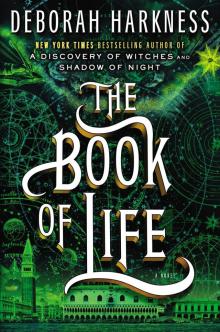 The Book of Life
The Book of Life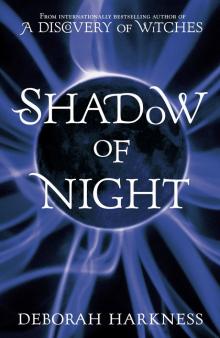 Shadow of Night
Shadow of Night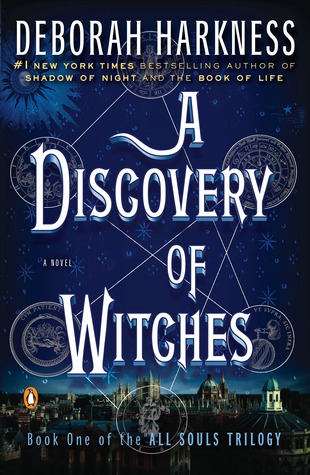 A Discovery of Witches
A Discovery of Witches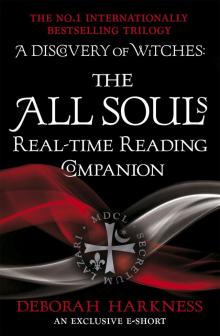 The All Souls Real-Time Reading Companion
The All Souls Real-Time Reading Companion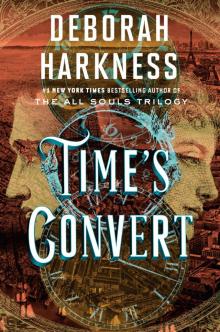 Time's Convert
Time's Convert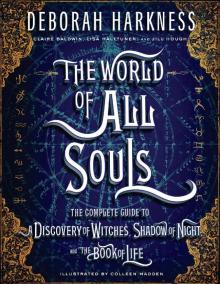 The World of All Souls
The World of All Souls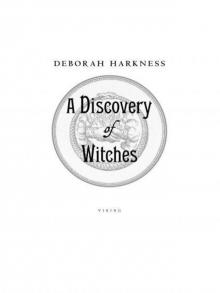 A Discovery of Witches: A Novel (All Souls Trilogy)
A Discovery of Witches: A Novel (All Souls Trilogy) Shadow of Night: A Novel
Shadow of Night: A Novel